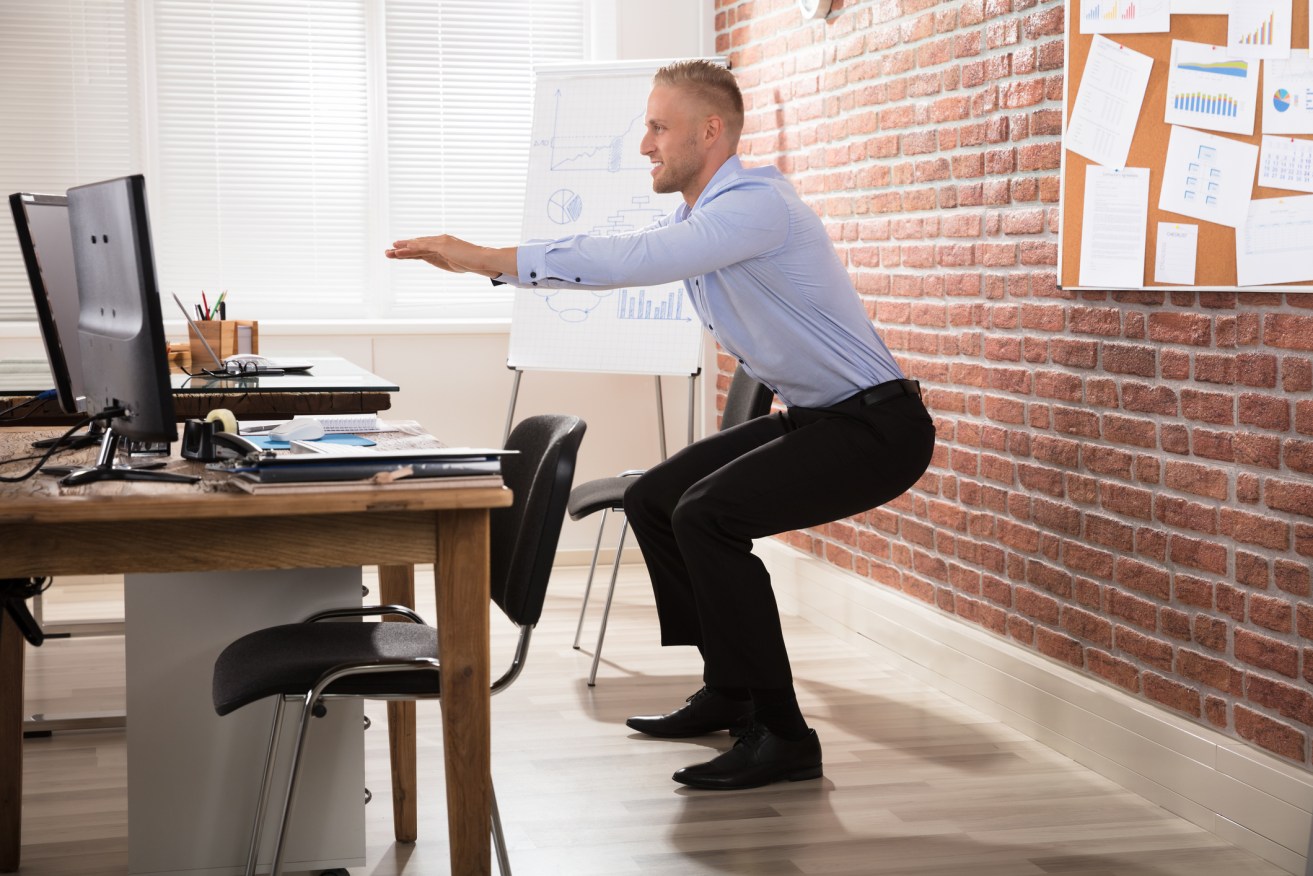‘Activity snacks’: How to maintain your muscles at work


Squats are good. Less disruptive are sit-to-stand squats where you don't have to leave your chair. Photo: Getty
Sitting at your desk at work seems to create its own gravity – in part because it can take a little while to get your productive groove going.
And the longer you sit there, perhaps vaguely aware that you’re not doing your body any favours, the harder it can be to get moving again. There’s resistance to slowing the flow.
Further, it’s hard to feel persuaded that taking a very short break and moving around actually does you any good.
What’s the damned point?
A new study from the University of Toronto plays cute with the problem, suggesting we adopt periodic “activity snacks” – very short bouts of movement “that may help maintain muscle mass and quality”.
These snacks could be no more than two minutes of walking – less time than it takes to get a glass of water – or 15 bodyweight sit-to-stand squats that don’t require you to leave your desk (or fully break your train of thought).
According to Daniel Moore, an associate professor of muscle physiology at Toronto’s Faculty of Kinesiology & Physical Education, these activity ‘snacks’ allow the body to use more amino acids from meals to build muscle proteins and clear sugar from out blood.
“We know that prolonged sedentary periods impair the body’s ability to filter sugar from the blood following a meal,” said Dr Moore, who led the study.
“However, breaking up this sedentary period with brief bouts of activity … can improve the way our body clears sugar from our meals.”
The study
The researchers went a little deeper: They wanted to see if these breaks might “increase the ability of our muscles to use the building blocks of protein (amino acids) from food to help them repair or replace old or damaged proteins”.
As Dr Moore explains: “This is critical to ensure the body has an adequate quantity and quality of muscle.”
He and his colleagues studied 12 healthy people (seven men, five women who routinely followed physical activity guidelines) across three trials for seven and a half hours each.
Participants were subjected to prolonged sitting interrupted every 30 minutes by short bouts of walking or body weight squatting.
They were also subjected to a controlled diet, fasted blood tests and muscle biopsies. Their fasted body composition and resting energy expenditure was measured.
The results? These small activities indeed helped “improve the efficiency of dietary amino acids used for muscle protein synthesis – the process to repair or replace old or damaged proteins”.
Why the focus on muscles?
Dr Moore said this focus was significant “because prolonged periods of low muscle activity – from sitting, wearing a cast or bed rest – is associated with a loss of muscle mass that occurs in parallel with, or because of, an inability of our muscle to build new proteins after we eat a protein-containing meal”.
He said the results also highlight that “moving after we eat can make our nutrition better and could allow more dietary amino acids from smaller meals or lower-quality types of protein to be used more efficiently”.
Is it that big a deal?
There’s good reason to pay attention. Victorian government health advice warns: “Sitting is the new smoking“.
It’s an accurate slogan, given sitting or lying around for too long, day after day, increases your risk of heart disease, stroke and cancer – as well as obesity, deep-vein thrombosis and metabolic disease.
A 2016 study of data from 54 countries concluded that sitting – just sitting for too long – was responsible for 4 per cent of all death.
On a practical note, the shortness of the activities makes them doable.
The big challenge for workers is developing the habit of getting up from your desk with enough frequency, and without finding them tiresome or too much of an interruption to their flow of thought.
On the other hand, going for a short brisk walk after lunch will at the least keep your blood sugar levels healthier.








